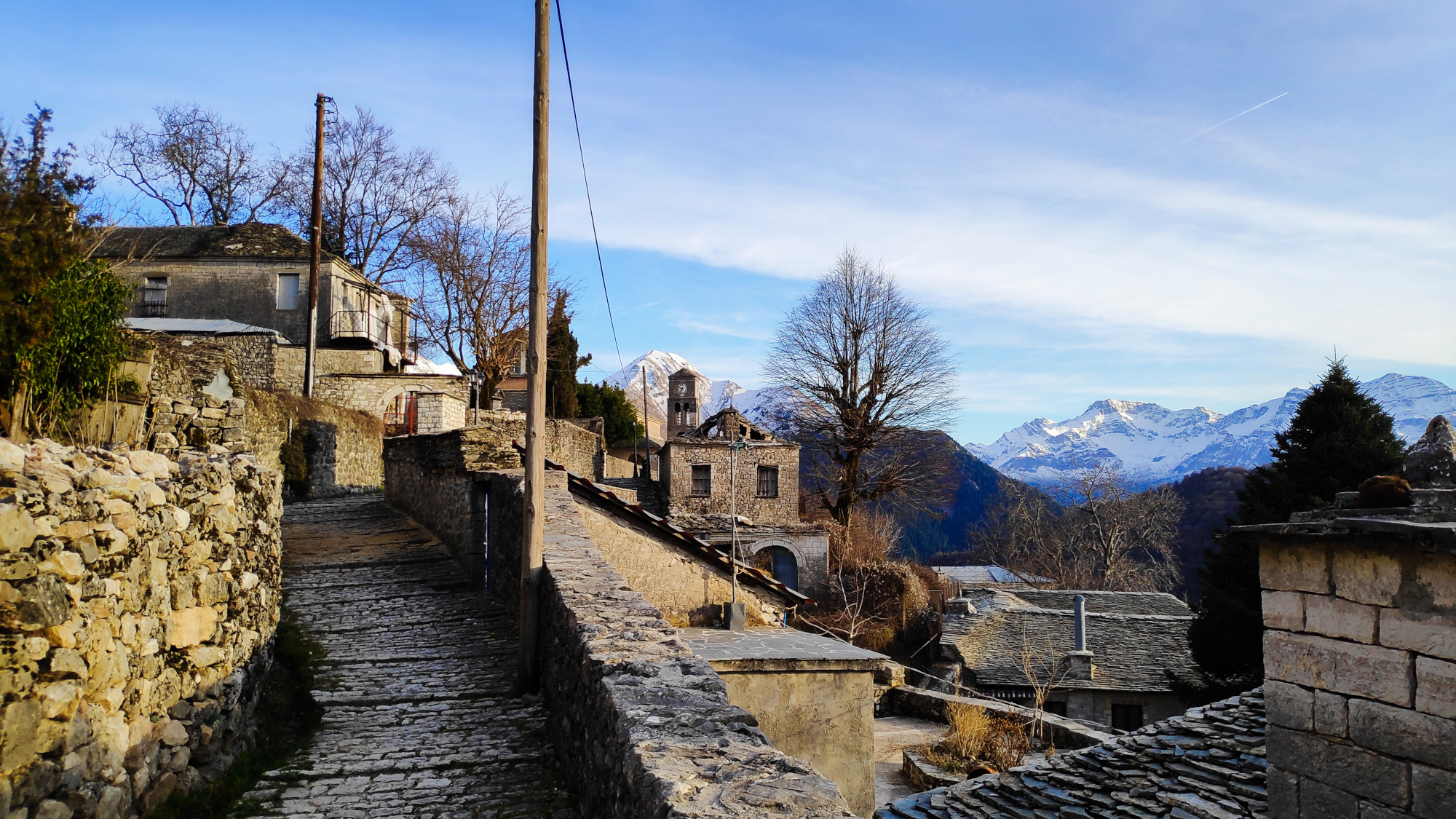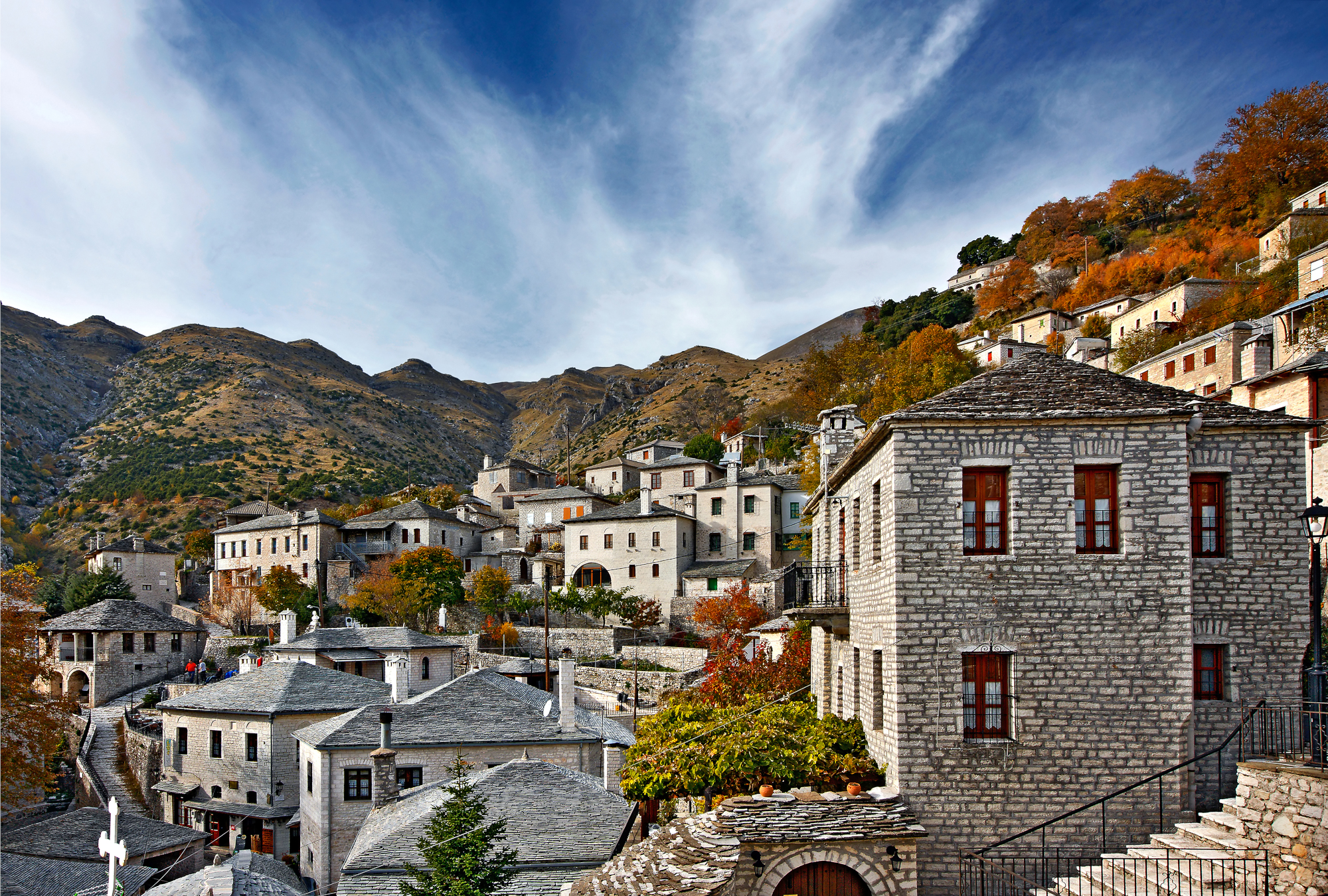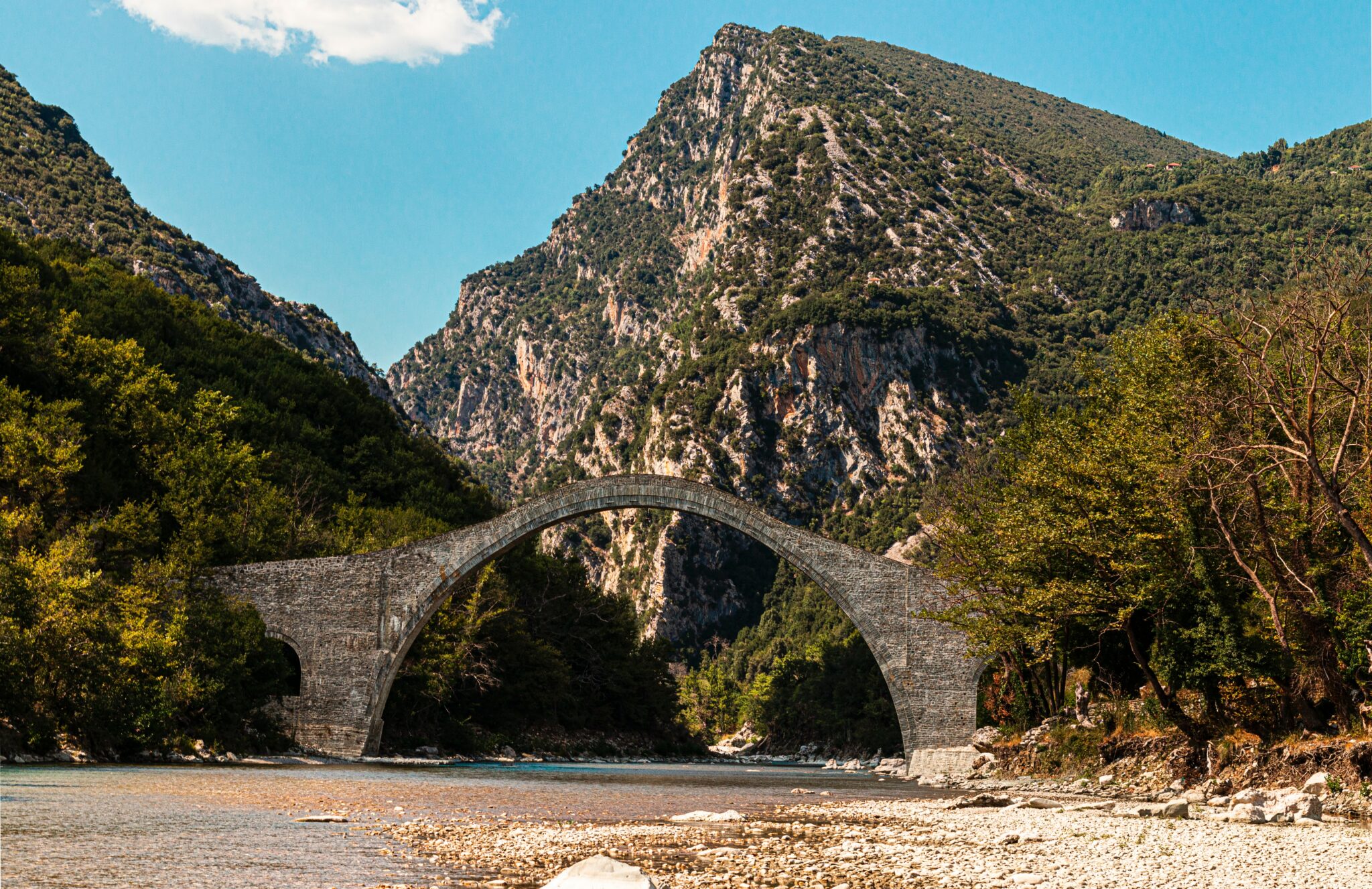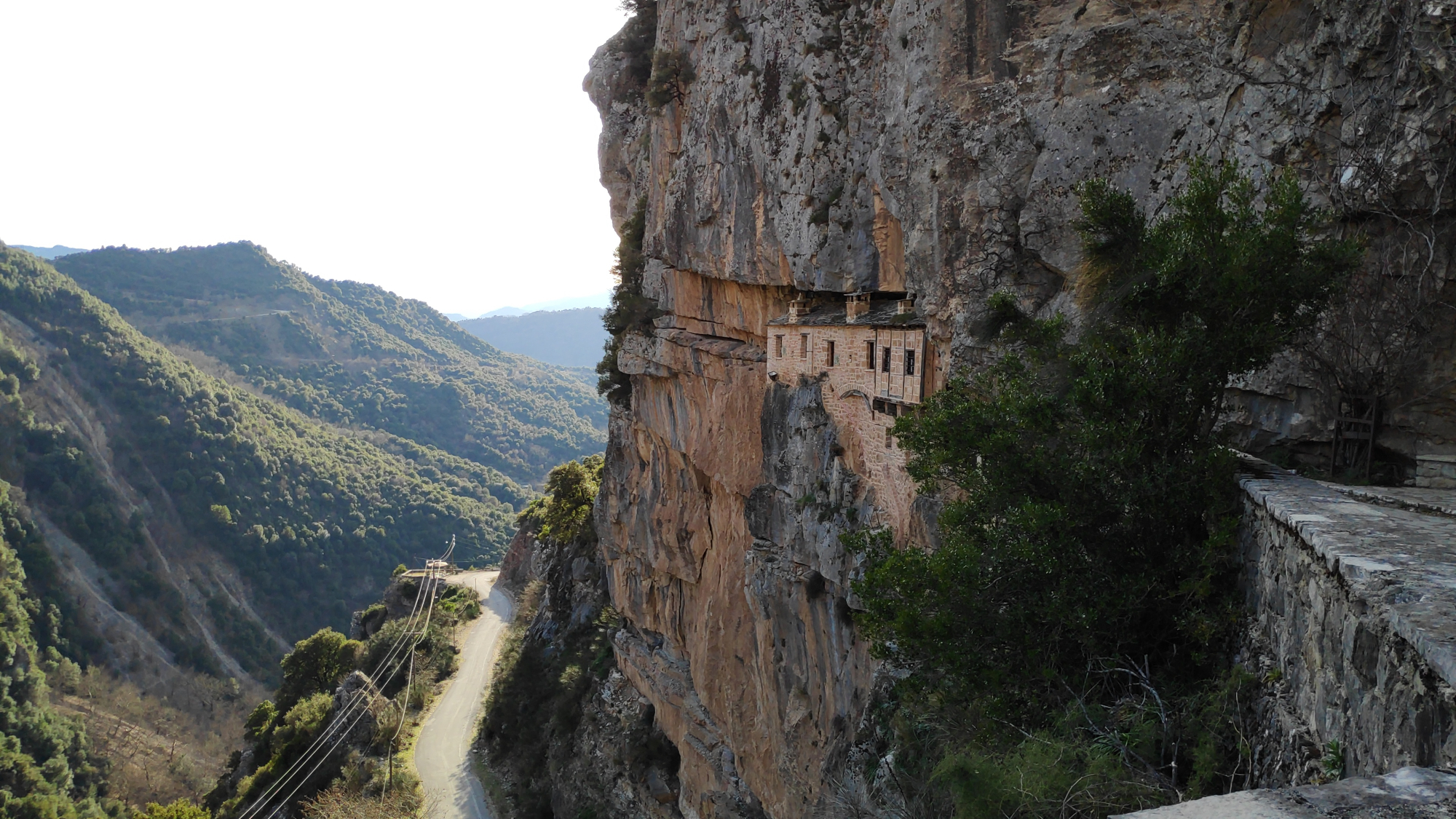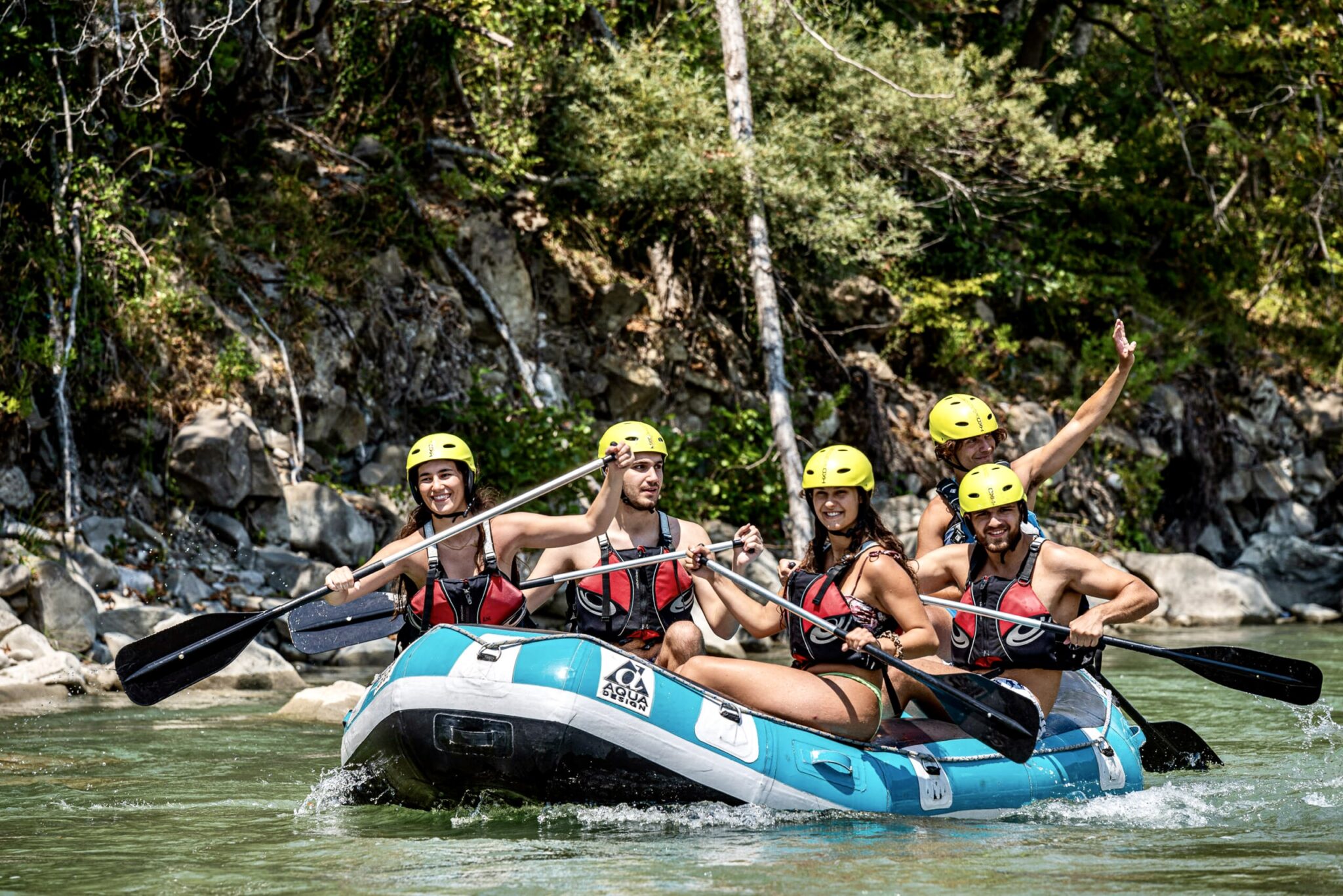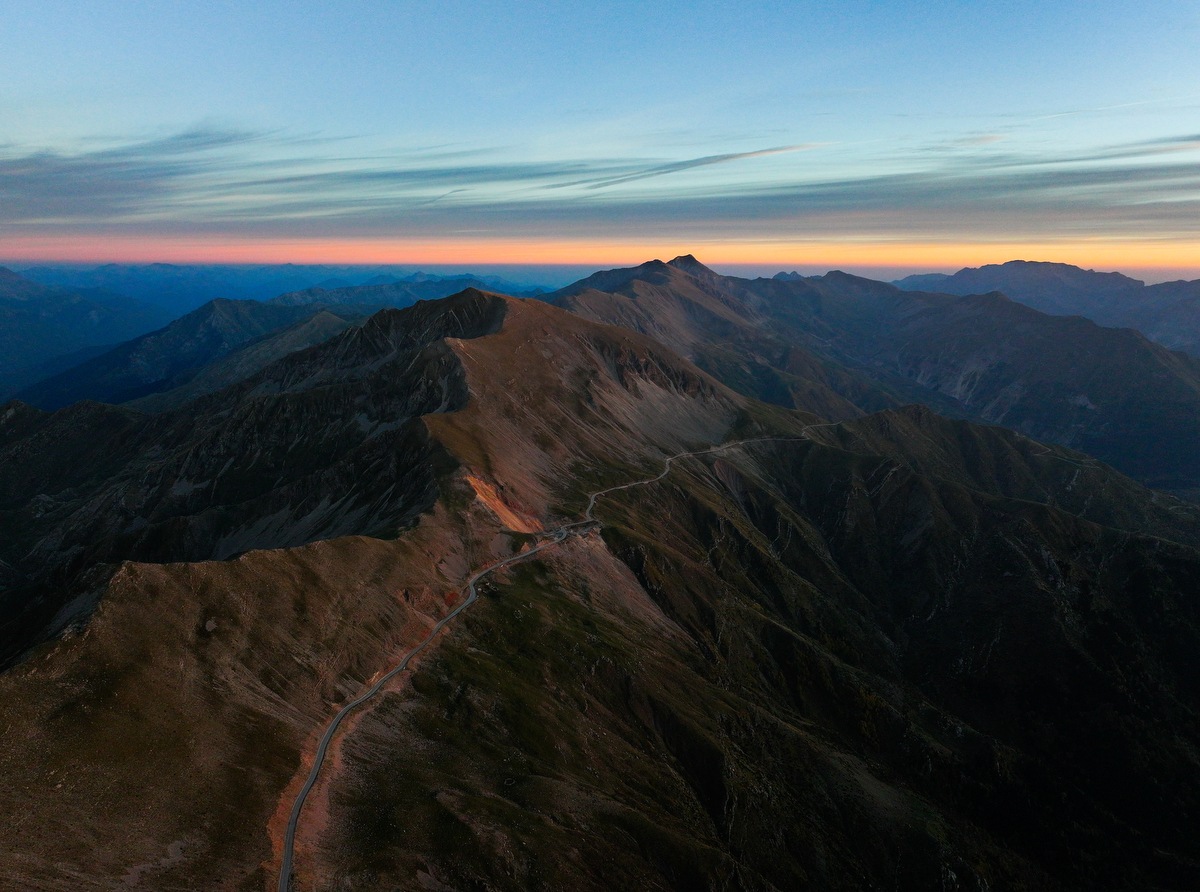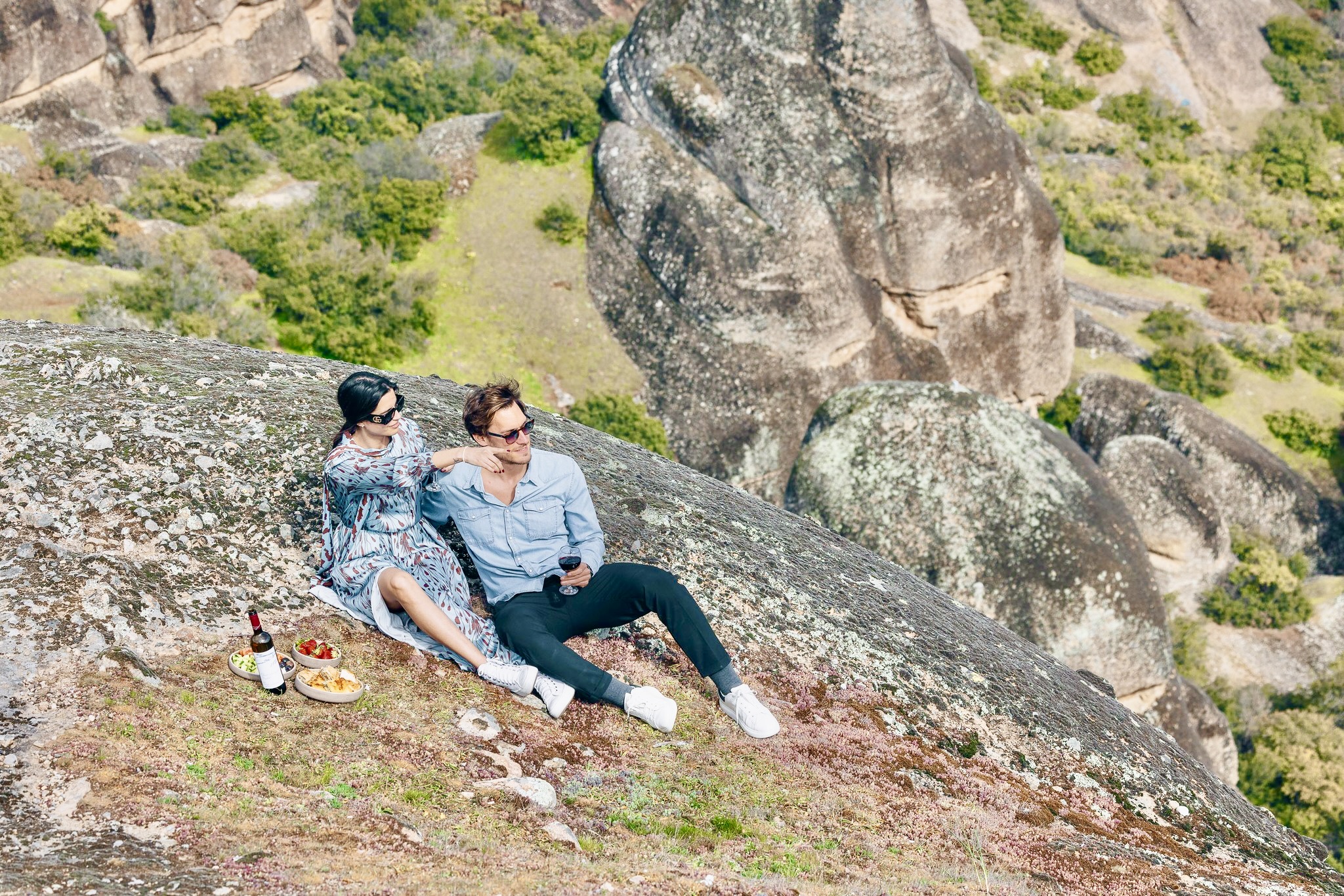Tzoumerka, also known as Athamanika, is one of the largest mountain ranges in western Greece. Located between the regions of Arta and Ioannina, it includes a number of memorable villages.
Landscapes of wild beauty with stone-built villages, monasteries and churches perched over caves and rockfaces compose a unique symphony where rivers, gorges, and waterfalls excite nature and mountain lovers.
In the past getting to Tzoumerka meant a big trip with a lot of driving but now with the Ionia Road, the Rion-Antirion bridge and the additions to the Athens-Patras national road, it has become much more accessible. The villages of Sirrako, Kalarites and the Katsanochoria and the rivers of Arachthos and Kalaritis between make for a nature escape of a unique beauty and charm. As a plus, the lodgings and local taverns are affordable.
Katsanohoria
A scenic route among the mountaintops of the South Pindos ends in this impressive cluster of villages that are scattered on the mountain slopes.
The local black granite and the huge holly oak trees give a stark beauty to the landscape. The stone is used for building the local houses that spread the smell of burning wood out of their chimneys on the cold winter nights, while the mountaintops far above glisten like iced cakes.
Sirrako – Κalarites
The road to the villages of Kalarites and Sirrako is impressive, with kilometres of uphill, twisting driving. Looking at the two villages from afar they stand perched on two mountain slopes linked by a single path, two evocative Vlach villages whose stone houses seem to have been painted by the hand of an artist.
Leaving the car outside the village and walking through the stone alleys, depending on the season you will either see the houses sprinkled with snow or you will relish breathing in the fresh summer air.
These two traditional Tzoumerka villages have authentic Epirotic architecture, and their stone-built houses with vaulted entrances, stone roofs, magical fountains with running water on the picturesque alleys entice. In both villages, during the Ottoman rule and under the protection of Ali Pasha, silverwork and trade bloomed.
The villages make for a unique travel destination throughout the year; a place with cool serenity during the summer, covered in snow during the winter. The distance between the two settlements is no more than 1500 metres and they are connected by a beautiful path. However, to get from one to the other by car you need to drive for around 40 minutes as the road zigzags over the Kalaritis river. Before the villages were liberated, this path was the border from the Greek and Turkish side. The walks by the Kalaritis waterway are stunning and its burbling waters end in the Arachthos river. The longest one-arch bridge in the Balkans, the Plaka bridge, is found where the two villages meet. Recently the bridge collapsed due to strong rainfall, but it was restored quickly with materials that were collected from the local riverbeds.
Sirrako has been declared a traditional settlement so cars may not enter the village. A cobbled path leads to the centre of the village, where on a scenic square there are two large plane trees and the stone fountain of Gkoura. Many famous Greeks are from this village; the well known poet Kostas Krystallis, whose parents’ house has been turned into a folklore museum. Ioannis Kolettis, the first Prime Minister of Greece, as well as the poet and freedom fighter Georgios Zalokostas were from the area.
Kalarites, another listed traditional village with a long tradition of silversmiths is next to Sirrako. Sotiris Boulgaris, the founder of the brand Bulgari, was from Kalarites. In Kalarites you will find the church of Agios Nikolaos with a distinctive wooden altar, as well as Napoleontas Zagklis’ traditional coffee shop which conjures up eras long gone with a wood stove keeping customers warm on cold winter nights.
Worth visiting
The Kipina monastery, one of the most impressive monasteries in Epirus, built in the cleft of a vertical rock near Kalarites. The monastery was built in 1212 and is dedicated to the Assumption of the Virgin.
The fir-covered villages of Tzoumerka – Plaka, with its famous bridge, and the amphitheatrically set Agnanta, Pramanta and Boulgareli.
The Anemotripa cave and the waterfalls in the village of Kataraktis.
Activities
Prepare yourselves for amazing rides on the Arachthos river either by rafting, kayaking, or canoeing. Elsewhere, there is mountain biking; archery, climbing and, of course, wonderful hikes on marked trails. The stunning steep mountain slopes around the merging of the Arachthos and Kalaritis rivers are ideal for great excursions. Make sure you visit the Kipina monastery and a hike to the Profitis Ilias chapel is a must for its breath-taking view.
Kalaritis, also known as Kalaritikos, drives through wild gorges full of waterfalls and stone bridges. It is a strong, fast, turbulent river with a steep, strong flow, and some calm spots after the Gogou bridge. Make a stop at the lovely Klifki waterfalls and swim in the small basins that form there.
Where to eat
Kalarites
Akanthos – Napoleon Zagklis: casseroles and other dishes by owner Napoleon at his unique shop in the village. Tel. 0030 697 226 5961
La Godru: At the edge of the gorge with a stunning view, well-made food, and a hospitable atmosphere. Tel. 0030 695 523 8896
Sirrako
Sarika: In the Casa Calda hotel in the centre of the village, with sweet treats, coffee, and tasty local dishes. Tel. 0030 26510 53540
Stavraetos: Open since 1974 it is known for its various pies -cheese, wild greens, courgette, meat, and pasta- grilled lamb, and for braised dishes such as mutton, goat stew, pork with celery and wild greens. Tel. 0030 694 642 4324
Goura: This tavern offers kokoretsi ( a traditional dish with intestines wrapped around offal) and skewered meats, as well as other local dishes. Tel.: 0030 2651 053303
Accommodation
Kalarites
Vogiarou Mansion: a three-storey stone mansion with spacious rooms, warm common areas, a bar, and a breakfast buffet serving local handmade ingredients.
Petradi 1873: Petradi 1873 offers seven simple rustic rooms with a fireplace and a view of the mountains and the gorge.
Sirrako
Casa Calda: in the Vlach language the name means warm house and this three-storey mansion built in 1864 by the Bitsiou family is stone built and has vaulted ceilings. It has 5 rooms on the first and second floor, while the old katói (ground floor that was used for the animals and food storage) has been turned into a living room.
Stavraetos: 8 rooms next to the Gkoura fountain on the main square with century-old plane trees. A two-storey mansion that the Vaitsi family renovated and turned into a guesthouse, it has wooden ceilings, carved furniture, and it is a clever combination of tradition, comfort and luxury. Another Sirrako mansion, that used to be a boarding school, has been renovated and added to the Stavraetos complex giving four extra rooms.
Old School Hotel: The old primary school has been turned into a guesthouse with 10 rooms, a reception area, and a breakfast room, with a traditional stone exterior, while the interior is decorated with period furniture, thick rugs, and pastel colours. At the café-bar you can enjoy a coffee, an herbal tea from Epirus, and local traditional products and homemade desserts.
Napoleon Zagklis: 7 well-kept traditional rooms
Gkoura Guesthouse: On the main square, with 4 rooms. Breakfast is served at the adjoining tavern, by the fireplace in the winter, with local eggs, cheese pie or trachanas ( a traditional kind of pasta made with flour and milk or yogurt).
Read also:
Anemotrypa cave, Tzoumerka: a journey to the centre of the earth
Tzoumerka: 8 exciting recreational activities in this part of Epirus promise memorable experiences
Smolikas Drakolimni: Sub-alpine lake with wild orchids on Greece’s second-tallest mountain



